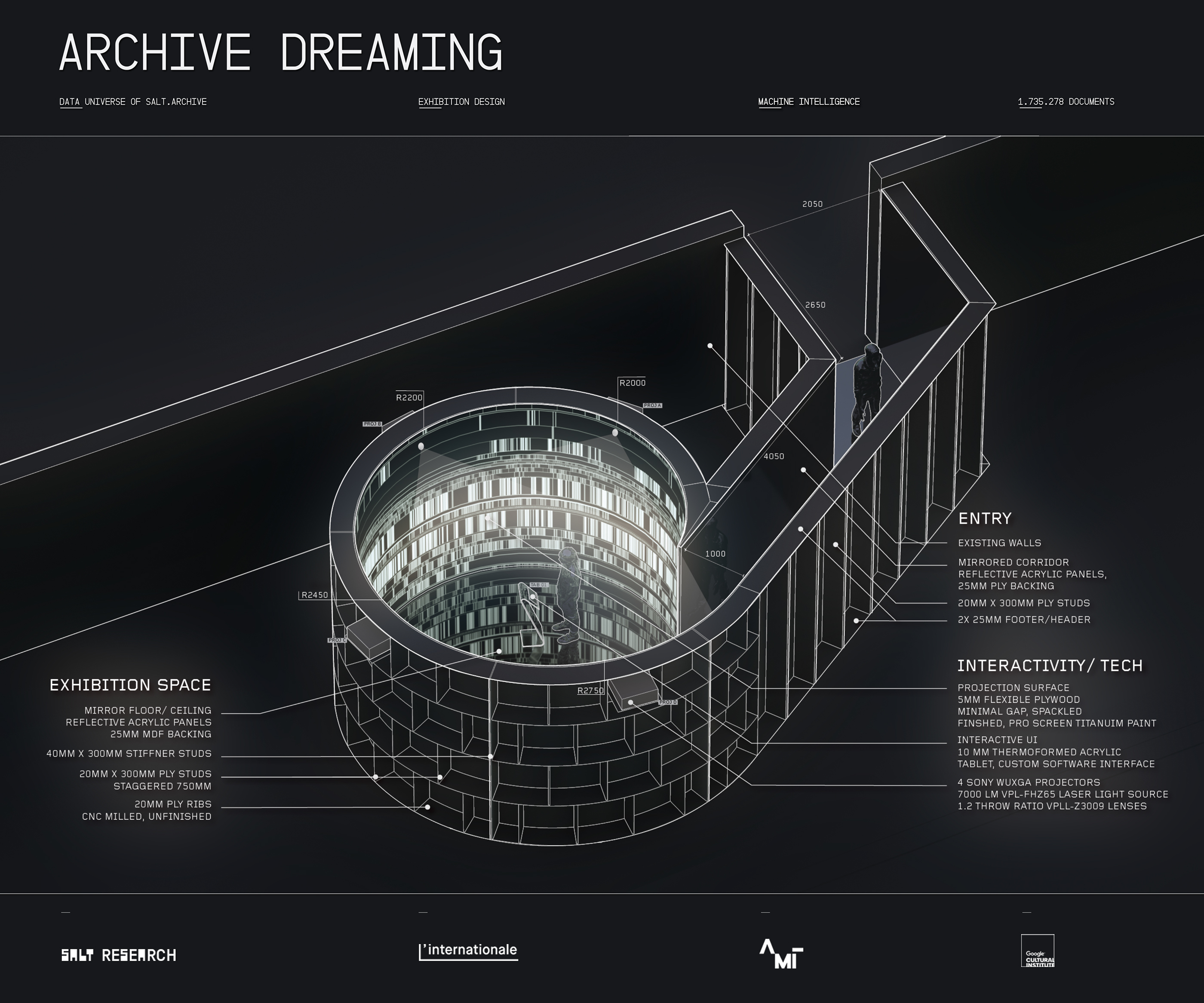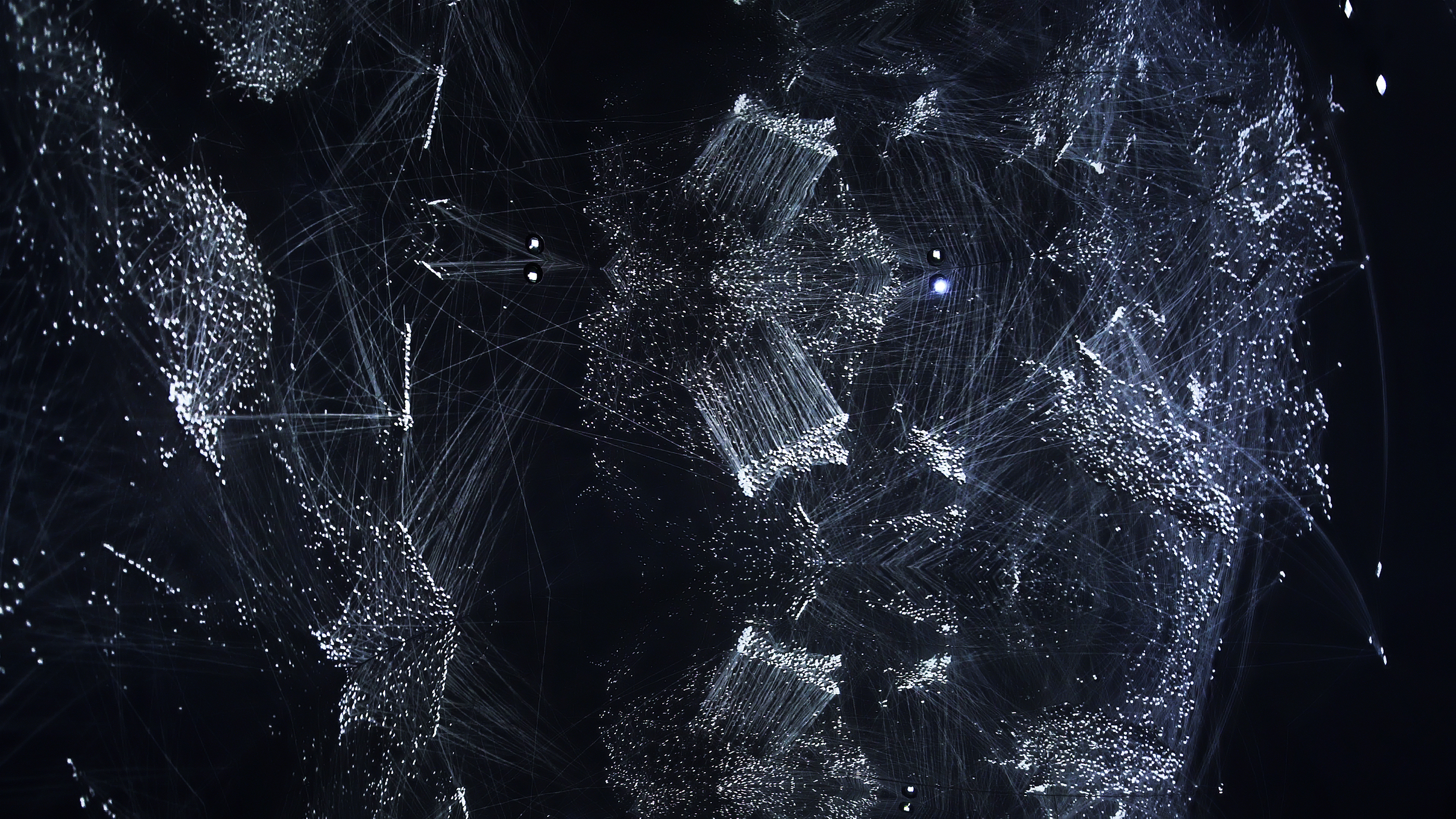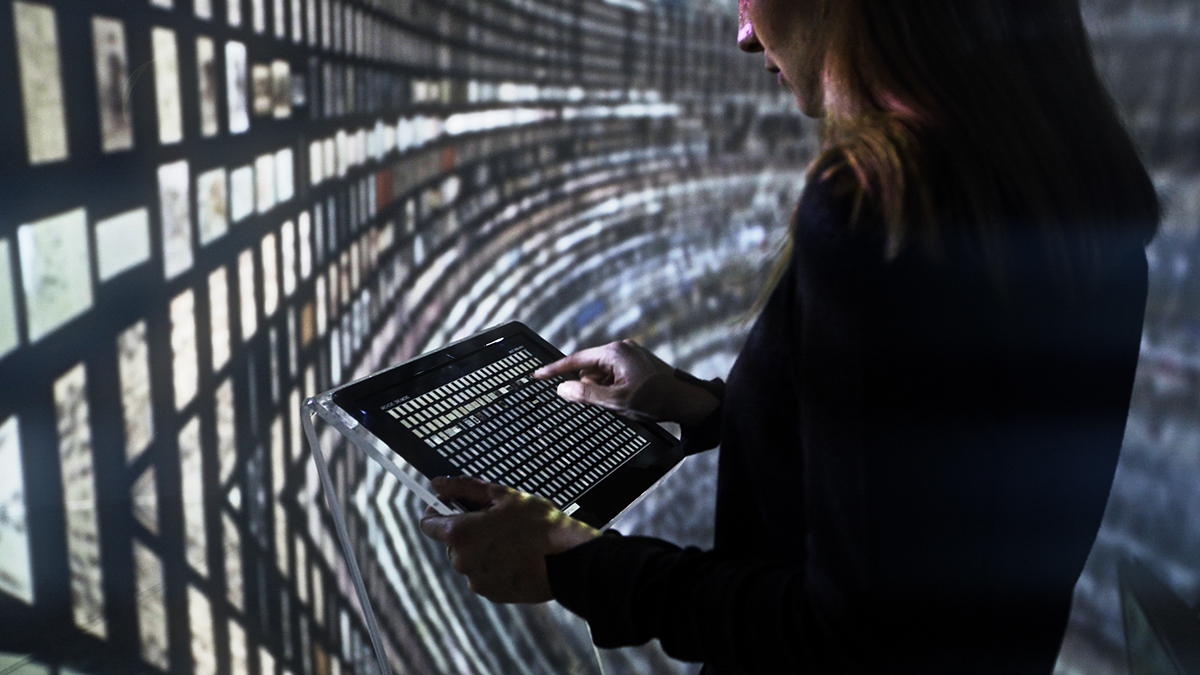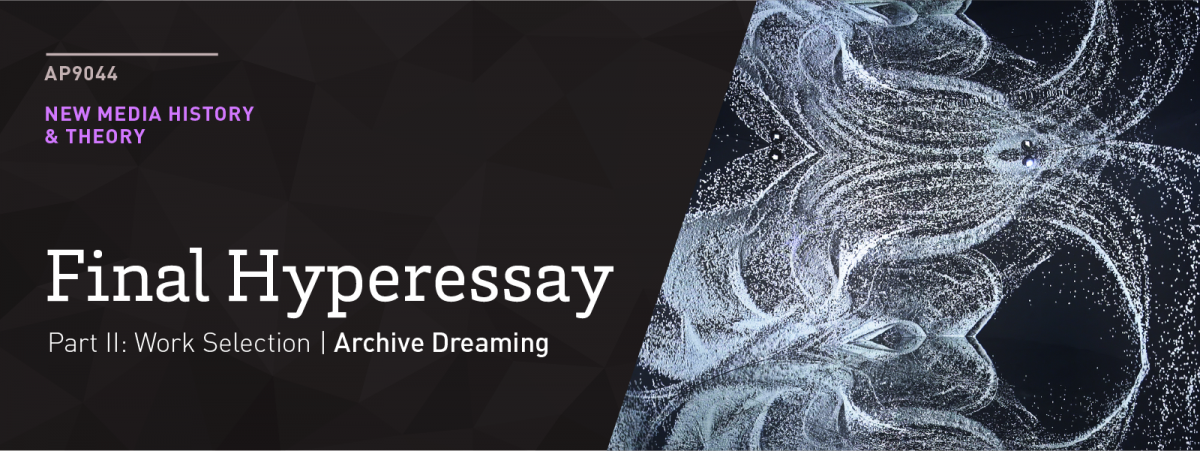Archive Dreaming (2017) by Refik Anadol is a data visualization work installed at SALT Research in Istanbul, Turkey. It was presented as part of The Uses of Art: Final Exhibition with the support of the Culture Programme of the European Union. Being a public art installation, the work was conceived as an alternative method for members of the public to peruse and engage with the document collections of SALT Research. The research facility comprises a specialized library and an archive of both physical and digital sources. Their collection includes visual and textual sources on art history, the development of architecture and design in Turkey, as well as documents dealing with the transformations in society and the region from the Ottoman Empire to the Turkish Republic. Due to the significant age of most of these documents, large parts of the collection are housed in specialized, pressure and temperature controlled rooms; causing most of the physical sources to be as easily accessible.

While other attempts at a such a project might have led to the creation of a simple photographic database, Archive Dreaming takes the concept of an interactive archive much further. The most obvious and significant aspect of this work is in its use of physical space and architecture. The installation is designed to be a spatial experience. In the words of Anadol himself, the work is described as an effort to “deconstruct the framework of an illusory space [that] will transgress the normal boundaries of the viewing experience of a library”. The work was specifically conceptualized with the notion to significantly transform the experience of accessing a knowledge repository. The work was to be a “a three dimensional kinetic and architectonic space of an archive.”

The other aspect of Archive Dreaming that sets is apart from a simple digital database is the flexibility that it provides users of the system. The work allows users browse the 1.7 million documents in the archive in a number of possible ways; each drawing different associations between the documents through the various viewing modes. This assists the viewer to draw relationships with the documents in a way that is suitable for their individual needs. In this way, the installation “intertwines history with the contemporary, and challenges immutable concepts of the archive.”
Such a system is only conceivable with the aid of Machine Learning and AI that have the capabilities of looking at, understanding and organizing all of the content found within this large set of documents. All of this processed information is then easily controlled by visitors from a touch sensitive console at the center of the installation space.

Machine Intelligence also takes center-stage for the final aspect of the installation. Getting its name from this process, the installation enters into a standby “dream mode” when no users are interacting with the archives. The system uses the knowledge gained from studying and classifying all of the 1.7 million documents in the archive to “hallucinate” new ones that might possibly exist in the archives. In a post-truth era where “facts” are constantly challenged and called by other names, this process calls into question about how much of our shared history is “real” and how much of it is to be trusted; a challenge that historians and documentarians constant face and grapple with. It also postulates the idea of a brave new world where creativity and creation might no longer be just in the domain of humans and perhaps, machines might play just a vital role in shaping the art histories of the future.

